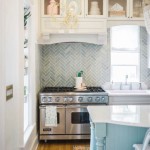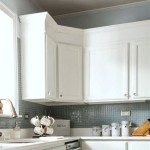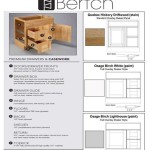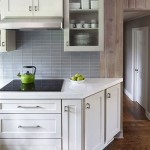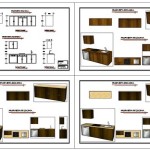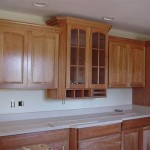Horizontal Kitchen Cabinets: Essential Aspects to Consider
Horizontal kitchen cabinets are a crucial component of any kitchen design, offering both storage and aesthetic value. Unlike vertical cabinets, horizontal units extend parallel to the floor, creating a sleek and contemporary look. Understanding the essential aspects of horizontal kitchen cabinets is vital for creating a functional and visually appealing space.
Types of Horizontal Cabinets
Horizontal kitchen cabinets come in various types, each with its own purpose and design:
- Wall-Mounted: These cabinets are mounted to the walls above countertops, providing additional storage space for items that need to be easily accessible.
- Under-Counter: These units are installed beneath countertops and can be used for storing cookware, appliances, or other kitchen essentials.
- Base: These cabinets form the lower level of the kitchen and typically store larger items such as pots, pans, and bulky appliances.
Materials and Finishes
The material and finish of your horizontal cabinets greatly influence their durability, aesthetics, and cost:
- Wood: Solid wood is a popular choice due to its durability, warmth, and natural grain patterns. However, it can be expensive.
- Laminate: A budget-friendly option, laminate is available in a wide range of colors and finishes, making it versatile for various design styles.
- Metal: Stainless steel is a durable and hygienic material that can add an industrial or modern touch to the kitchen.
Storage Options
The storage capabilities of horizontal kitchen cabinets are determined by their interior configurations:
- Shelves: Adjustable or fixed shelves provide ample space for storing a variety of items.
- Drawers: Drawers offer easy access to frequently used items, such as utensils, spices, or cookware.
- Pull-Outs: Pull-out shelves or trays create convenient storage solutions for items that need to be accessed while cooking.
Design Considerations
When choosing horizontal kitchen cabinets, consider the following design factors to enhance functionality and aesthetics:
- Size and Configuration: Determine the size and configuration of the cabinets based on the available space and your storage needs.
- Style: Choose cabinets that complement the overall kitchen style, whether modern, traditional, or eclectic.
- Handles and Knobs: The handles and knobs not only provide functionality but also contribute to the visual appeal of the cabinets.
Advantages of Horizontal Kitchen Cabinets
Horizontal kitchen cabinets offer several advantages:
- Increased Storage Space: These cabinets provide ample storage capacity, allowing for easy organization of kitchen essentials.
- Sleek and Modern Look: Horizontal cabinets create a clean and contemporary aesthetic, adding a touch of sophistication to the kitchen.
- Versatile Placement: Horizontal units can be placed at various heights to accommodate different needs and preferences.
Conclusion
Horizontal kitchen cabinets are a versatile and stylish addition to any kitchen design. By understanding their essential aspects, such as types, materials, storage options, design considerations, and advantages, you can create a functional and visually appealing space that meets your individual needs and preferences.

Modern Kitchen Cabinetry Frameless Overlays Horizontal Lines And Natural Beauty

Trend Study Horizontal Grain Cabinets Make Kitchen Designs Modern Natural Dura Supreme Cabinetry Bamboo Design Contemporary

Trend Study Horizontal Grain Cabinets Make Kitchen Designs Modern Natural Dura Supreme Cabinetry

Modern Kitchen Cabinetry Frameless Overlays Horizontal Lines And Natural Beauty

Horizontal Kitchen Wall Cabinets Cabinet

Horizontal Grain Cabinets Mtd Kitchen

7 Kitchen Cabinet Trends To Watch In 2024 Hig Construction

Image Result For Horizontal Kitchen Cabinet Glass Doors Cabinets Modern

The Top 10 Kitchen Wall Cabinet Options Vestabul School Of Design

Kitchen Design And Renovation For Small Spaces H Cabinets
Related Posts



